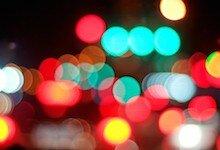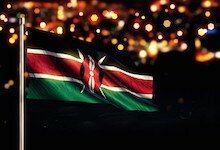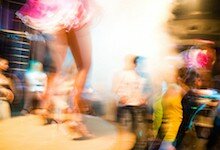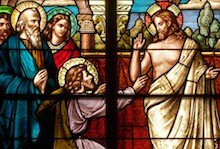Biton meets Buzaglo: a riff

A sort of paternal relationship is established, in which the son, who has distanced himself from his father, suddenly sees, in a moment of enlightenment, their inevitable resemblance in the mirror.
The Hebrew of Dizengoff Street [in central Tel Aviv]; the Hebrew of the poor suburbs; Moroccan Judeo-Arabic; and the hybrid nature of ‘Bach’s short masses/ in Moroccan Hebrew’, do not exhaust the types of language Erez Biton addresses in order to resolve the conflict in which he finds himself immersed, and there is at least one more type of Hebrew. If the Hebrew in peripheral areas populated by Mizrahi Jews is taken by most of the dominant culture for an inferior Hebrew of the streets, the broken Hebrew of immigrants, well, here comes a fifth kind of Hebrew: it is Mizrahi, [Hebrew for ‘eastern’, denoting Jews from the Arab world and adjacent, mostly Moslem-majority countries] with a continuous history, and includes the languages of the sages, prayer, midrash, law and piyyut [liturgical poetry]. It feels sure of itself.
One of the poems emblematic of this Hebrew is ‘To speak at the moment of illumination’, appearing in Biton’s third book, Intercontinental bird in 1990. [ . . . ] It is one of Biton’s most optimistic, in which the two great Moroccan Jewish poets of the 20th Century, two blind men, meet in an illuminating moment, in a great light.
Biton’s path in search of himself, to discover a new poetic identity, Israeli and modern, brought him back to the paytan [writer, composer and singer of piyyut] Rabbi David Buzaglo, and revealed to him that his own self could be found in Buzaglo: the two of them originating in the same ‘honey dipper’. Such peacemaking and restful words are relatively rare for Biton, who mostly expresses the upsets of migration.
[ . . . ]
Biton approaches Buzaglo and invites him (twice) to ‘the center of the stage’. What stage? The platform of the newspaper’s literary supplement? That of Café Roval on Dizengoff Street, recalled in other poems? The bima in the Moroccan synagogue? Biton seeks to return Buzaglo to the center of new Hebrew literary awareness while knowing that the invitation is twofold at least. It is not only Buzaglo that he wants to bring out of the corner of the obscure synagogue to the literary supplement. He would also like to propel himself from the back page of the literary review toward the lively synagogue stage.
[ . . . ]
What is special about this moment is that Biton does not want to skip the recent past, and consign it to oblivion, in favor of the classic period of Moroccan piyyut bathed in splendor. Instead, Biton seeks to conduct a dialogue with [with the recent past now . . . ]. He calls attention to the continuity of piyyut in the 20th Century in his approach to Rabbi David Buzaglo, who lived most of his life in Morocco, and the final decade in Israel. He conducts a dialogue with the real, live figure of Buzaglo, who has to this day not been recognized as a classical [poet], and [has been associated] with a period that the academic imagination considers inferior.
In the face of the rejection of sacred tradition by the new Hebrew literature, and the rejection of diasporic Mizrahi traditions, in effect the rejection of piyyut writers who reached Israel, Biton invites Rabbi Buzaglo, calls attention to him within the new Hebrew literature, while also painting himself in Buzaglo’s colors.
[ . . . ]
One of the repeated lines in this poem is ‘following myself I reached you’. The search for self, the dominant Romantic ideal of the creative artist is something that the new Hebrew literature adopted from European tradition, and it is exactly what leads Biton to Buzaglo, inevitably. A sort of paternal relationship is established, in which the son, who has distanced himself from his father, suddenly sees, in a moment of enlightenment, their inevitable resemblance in the mirror.
[ . . . ]
Biton here reaches beyond the dichotomy through which Mizrahi art in Israel is often viewed, as between protest [ . . . ] and folklore (the ‘documentation’ of experience), a dichotomy that provides a meager sustenance for Mizrahi artists, somewhere between politicization and nostalgia, [ . . . ] without any opportunity to bridge the fracture between past and present.
Buzaglo’s central position in the poem also allows for the use of a more complex language when discussing Moroccan Jewish or other Mizrahi cultural traditions. It is the tendency of critics to speak of the silencing of first generation immigrants, and to say that their descendants are completely cut off from their heritage, lacking the tools to become acquainted with it (and thus unable to return to the place where they could learn about it). But the figure of Rabbi David Buzaglo reminds us that this isn’t necessarily so, and that to talk about silencing, without making an attempt to approach the tradition itself, and the way it continued to survive despite its repression, is an additional form of silencing. Buzaglo was not silent in Israel. As soon as he arrived in 1965, he began to travel among the development towns north and south [where Mizrahi immigrants were settled by the government], among various Moroccan communities, at a moment of rupture, in order to strengthen people who were wounded by the immigration process, and felt marginalized geographically and socially in Israel. During the decade that he lived in Israel, Buzaglo was a major factor in the revival of the Moroccan Jewish tradition of supplicatory poetry there. He wrote many poems in Israel. He did not keep silent and he was not silenced, and many of his poems live on in synagogues and communal events.








